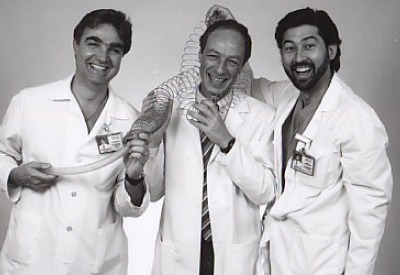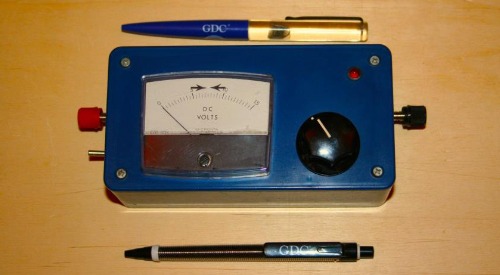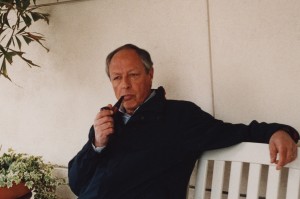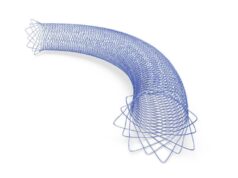
|
By Gary Duckwiler On 28 July 2015 at the 12th Annual Meeting of the Society of NeuroInterventional Surgery (SNIS), a special session was held to celebrate and reminisce on the 25th anniversary of the first in-human use of the Guglielmi Detachable Coil (GDC). Now, Gary Duckwiler writes his first hand account of the experience for NeuroNews. |
![]()
The history of endovascular neurological treatment is long and storied, but one of the most seminal events was the development and use of these detachable coils for the treatment of cerebral aneurysms. This dramatically changed the landscape and scope of therapy for aneurysms and the specialty of neurointervention itself. Previously, the practitioners were few and the numbers and types of cases treated were very limited. The GDC can be credited with developing a new segment of industry, sparking stunning creative development and spawning a whole generation of specialists and of the SNIS itself. I had the great good fortune of being a fellow and faculty during the final development and use of the GDC while at University of California at Los Angeles (UCLA).
We are rightfully proud to honour the legacy of those involved in the GDC story. Of course, that begins with Dr Guido Guglielmi, who had the vision and ideas to develop this novel method of aneurysm treatment. Dr Guglielmi was born in Rome, Italy in 1948. He studied medicine and neuroscience at the University of Rome. While a neurosurgical resident at the University of Rome, he returned to his early interest in engineering and began to investigate the possibility of using electrothrombosis in cerebral aneurysms. As fate would have it, his father suffered a subarachnoid haemorrhage from an aneurysm. This personal traumatic event intensified his efforts, and by 1979, he had performed his first experimental treatments in rabbits. In 1983, while visiting the University of Western Ontario, he began a friendship and collaboration with Dr Fernando Vinuela who was a young faculty member there performing neurointervention. A continued correspondence and interest by both to advance this novel treatment meant that ideas percolated. By 1989, Dr Vinuela had moved to UCLA. The visionary chairman of Radiology, Hooshang Kangarloo, was convinced by Dr Vinuela that these ideas could revolutionise aneurysm treatment. Dr Kangarloo provided the essential funding and resources to allow Dr Guglielmi to move to the United States to work full time on his ideas, something that was just not possible at the University of Rome.

Some of the initial work focused on placing electrolytically detachable micromagnets into aneurysms and infusing ferrous particles to fill the aneurysm. Unfortunately, the amount of filling of the aneurysm was limited. But, it appeared that the electrolytic process enhanced thrombosis of the aneurysm. Thus began the idea of mating some method of filling the aneurysm with a soft device and detaching it in situ with electrolysis. Clearly more engineering was required. At the time, a very small company, Target Therapeutics, was developing and producing very small (at the time) and very supple microcatheters which were ideal for intracranial navigation. As the company was initially headquartered in Los Angeles, Guido had access to their engineers. One of the very best engineers I have ever known, Ivan Sepetka, began collaboration with Guido, prototyping, testing, refining and brainstorming. I would see them at the office next to mine at all hours while they worked and worked on bringing the project to fruition.
After months of testing, refining and development, the coils were essentially in the form we find them today. But using them in humans was still a hurdle. However, on March 6th 1990 we were treating a patient who had developed a direct carotid cavernous fistula. We tried the arterial and the venous approach with balloons with no success. So, as a last resort, Fernando Vinuela, Jacques Dion and I, decided to try the GDC. Guido Guglielmi delivered two coils (one was 40cm long and the other 15cm long), but nothing happened, the fistula was still there. We stopped at that point with the intention of trying again the next day. But, the follow-up angiogram showed that the fistula was gone. We all jumped up to the ceiling. We all knew that Dr Guglielmi’s coils would bring big changes to our field. Eventually, images of that case were used as a cover page of the journal Neurosurgery.

The next phases were the trials, FDA approval and promulgation of the therapy worldwide. There was a lot of resistance to this therapy at first, and there certainly was reason for an abundance of caution. But as we can see, coiling of aneurysms is now the primary treatment for aneurysms throughout the world. It is a testament to the innovation and dogged determination of Drs Guido Guglielmi, FernandoVinuela, Ivan Sepetka and many others who helped nurture this idea to reality.
Gary Duckwiler is professor and director of Interventional Neuroradiology, director of the INR Fellowship Program and co-director of the UCLA HHT Center of Excellence, David Geffen School of Medicine at UCLA, US
Guido Guglielmi:

Dear Friends,
Here we are celebrating an important anniversary—the 25th anniversary of the first clinical use of the GDC coil. We did the first GDC case on March 6th 1990, a little over 25 years ago. The experimental research that eventually led to the GDC, took place in 1989 at the University of California at Los Angeles, where in fact, Fernando Vinuela succeeded to bring me to UCLA finding a salary for me. I arrived in Los Angeles on January 15th 1989 and eventually left in 1999, returning home to Rome.
GDC have been utilised in many hundreds of thousands of patients worldwide and have almost replaced the classical, surgical approach. Many lives were saved.
I specialise in neurosurgery and I have practiced interventional neuroradiology for decades. I have been very interested in electronics since I was 12 years old and I always loved mechanics. These were the four key factors that led to the development of the electrically detachable coils, the GDC coils.
I would like to thank my professors in Rome who taught me the fundamentals of neurosurgery. I would like to thank Fernando Vinuela for his fundamental and decisive role in the development of the GDC and for his knowledge and support. I would like to thank the entire team at UCLA, including all the staff, I always felt their support, practical and emotional. I would like to thank the engineers of Target Therapeutics, in particular, Ivan Sepetka and Eric Engelson for their expertise, support and for their skills.
I would like to thank the United States of America, which gave me the possibility of doing what I did. Last, but not least, I would like to thank my wife and my two daughters, who gave me the serenity in their emotional and spiritual support that I needed most.
Guido Guglielmi on the 25th anniversary of the first use of the Guglielmi detachable coil.
Source: SNIS 2015 annual meeting









